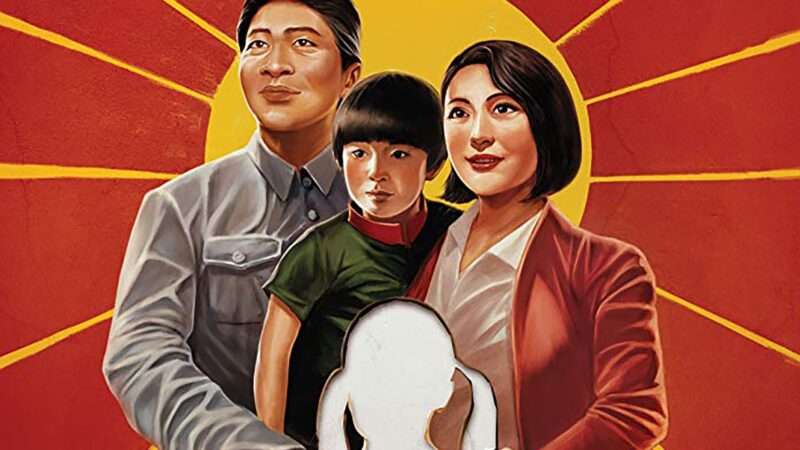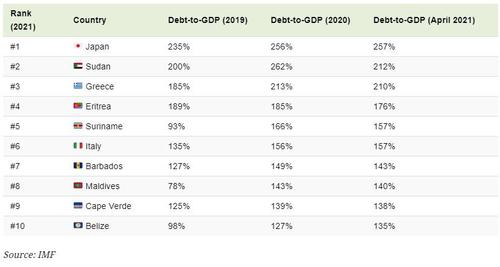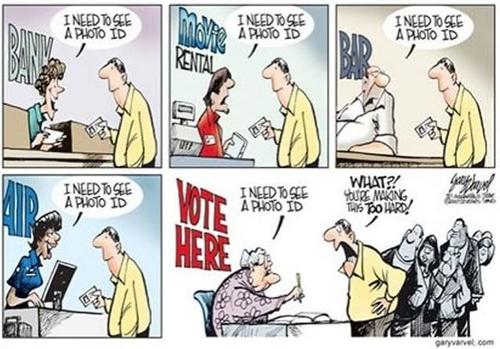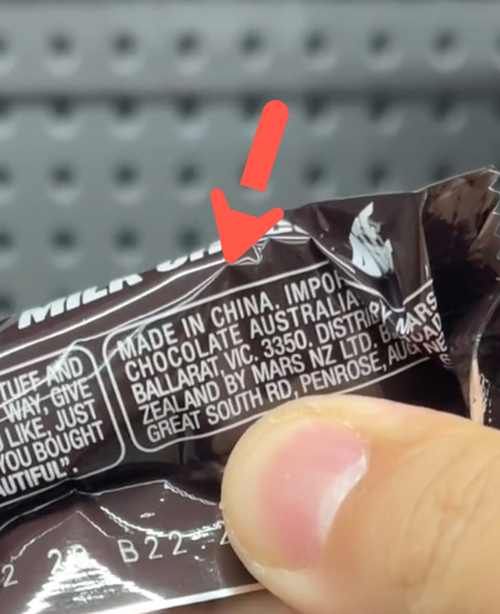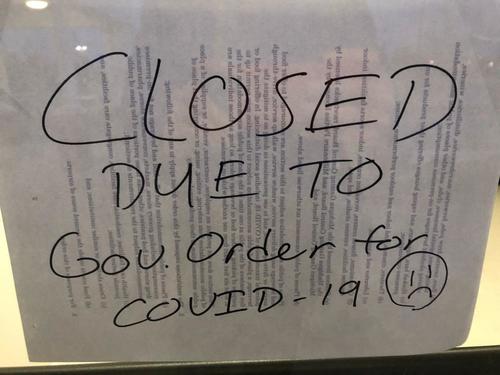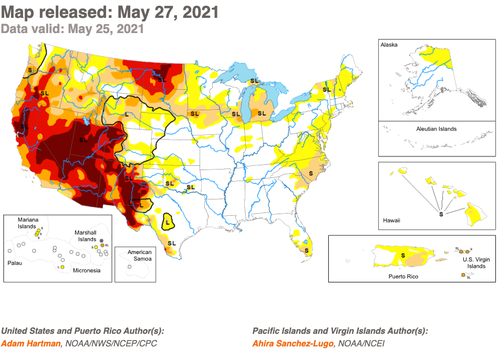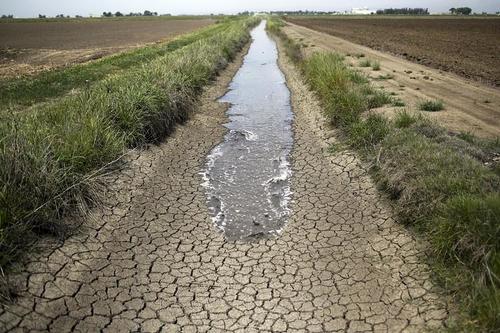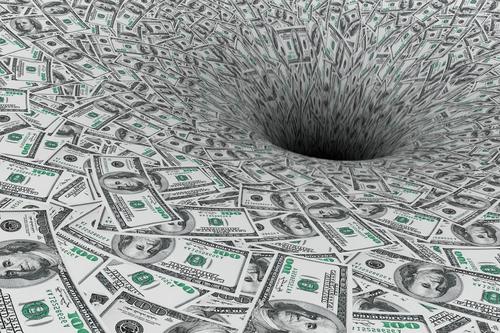Authored by Jamie Joseph via The Epoch Times,
Los Angeles is set ablaze up to 24 times a day. The cause? Thousands of homeless encampments…
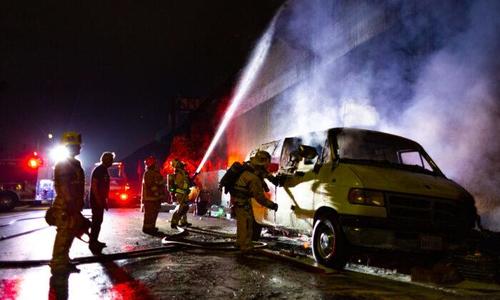
This year, fires started in homeless encampments have accounted for 54 percent of the blazes battled by the Los Angeles Fire Department (LAFD), according to officials—a sharp uptick compared to 2020.
As the county grapples with more than 66,000 people living on its streets, critics are pointing to the growing number of fires caused by the homeless as another indication that officials are mishandling the crisis. And in parts of the city where the homeless are concentrated, residents and business owners say their concerns are not being heard.
LAFD Capt. Erik Scott told The Epoch Times that potential hazards in encampments come from warming and cooking fires, particularly on cold nights.
“One of our concerns is fires in tents where people experiencing homelessness are sleeping—where they could be injured or even die—and fires that start against a building and spread into the structure,” Scott said.
“Flames from those fires can spread into the brush in wildland areas, or to nearby buildings in urban areas or inside vacant buildings.”
He said potential fire hazards increase significantly on windy days, when the flames can spread rapidly.
“Using open flame to cook in any enclosed spaces, especially tight quarters like tents, can easily catch the tent or belongings inside on fire,” said Scott. In addition, toxic smoke gases can asphyxiate the tent’s occupants, knocking them out or killing them.
LAFD Fire Chief Ralph M. Terrazas recently walked through the Skid Row area in downtown L.A. with representatives from nearby business districts to discuss their concerns about encampments.
“The LAFD now has our Downtown-based Fast Response Vehicle on duty six days per week to service the Skid Row area,” Scott said.
He described the vehicle as a quad-cab pickup truck equipped with a 300-gallon fire-suppression tank that “can quickly extinguish fires while small.”
But not all fires caused by the homeless are small: In the wealthy enclave of Pacific Palisades, a homeless person was charged May 18 with committing arson attacks that ignited a 1,158-acre brush fire. The suspect allegedly ignited the blaze repeatedly, according to witnesses in an LAFD helicopter.
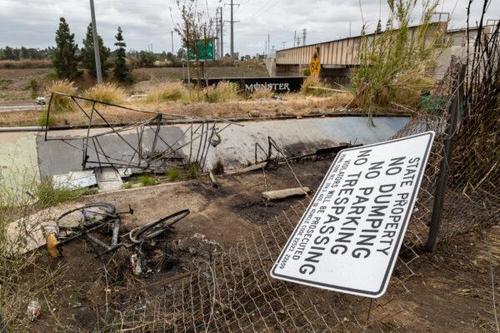
Burned items are found along the 91 Freeway near the area where a homeless man died after starting a fire, in Anaheim, Calif., on April 21, 2021. (John Fredricks/The Epoch Times)
The issue is citywide, Scott said. Multiple agencies and departments have separate roles regarding the homeless, based upon their agency’s jurisdiction. The LAFD is now working closely with both city and county partners to address the encampment fires.
After the Pacific Palisades suspect was arrested, L.A. Councilmember Mike Bonin responded on Twitter.
“Arson is a crime committed by a person, and not by their housing status,” Bonin wrote.
“Suggesting the suspect’s housing status is a contributing factor to the crime is irresponsible, and implies other people experiencing homelessness are inherently more dangerous or more likely to commit arson than housed people.”
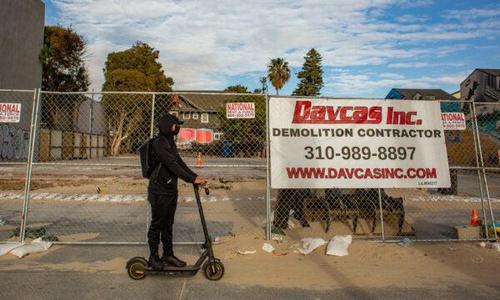
A man on an electric scooter drives past the site of a building that was torched by homeless individuals, in Venice Beach, Calif., on Jan. 27, 2021. (John Fredricks/The Epoch Times)
Venice Beach
One L.A. neighborhood in particular experiences these fires too often: Venice Beach. The world-renowned tourist destination—with an estimated 30,000 visitors per day—is now crippled with crime, drugs, fires, and homeless tents piled on top of each other.
Many of the tents have propane tanks and camping stoves inside, used by the homeless for cooking or warmth. Needles, feces, and other discarded hazardous items are regularly found on the nearby sand.
The deterioration of the neighborhood has impacted local businesses. People from around the world are canceling their hotel reservations in the area, according to Venice Chamber of Commerce President George Francisco, who said he’s received firsthand accounts from local hotel owners.
“People see the news stories, and they just cancel,” Francisco told The Epoch Times.
“Or when you’re looking for hotel rooms and you see the coverage … how could any of these places stay in business?”
Francisco said city officials haven’t offered any solutions to protect businesses and residents. He used to stay in touch with Bonin, he said, but the councilman hasn’t responded to him in four years—despite multiple letters sent to officials sounding the alarm on the homelessness issue affecting businesses on the boardwalk.
“No one is trying to solve this problem [because it would] cripple the largest financial business in Venice, which is social services,” Francisco said, pointing to Bonin’s policies that address homelessness by creating more emergency shelters, which then contract nonprofits to operate them.
Bonin, who did not respond to The Epoch Times’ request for comment, championed the neighborhood’s first bridge housing facility. Residents have told The Epoch Times previously that the facility doesn’t work, and only serves to attract more transients and trash.
The Wild Wild West
Videos are shared daily on social media by a local neighborhood watchdog group that show the disorder on the Venice boardwalk. In early May, the group posted a video that showed an encampment erupting in flames. Another video, shared later in the month, shows two homeless people physically assaulting one another while a dog gets caught in the middle.
“Sadly, animal abuse and neglect are common in the boardwalk encampments,” according to the caption.
Another video, posted to Twitter on May 20, shows two individuals in a fistfight in front of the Venice Beach Bar. “Who needs MMA [mixed martial arts] when we have the Venice Boardwalk?” the posting states. The caption concludes by thanking Councilmember Bonin, whose district includes Venice.
Luis Perez, the bar’s general manager, told The Epoch Times the incident was what locals call “street justice.” The fight started because one of the men, who lives in a nearby encampment, was allegedly abusing his girlfriend, he said.
Perez said similar incidents take place weekly—and the bar is suffering because of them. They’re “definitely feeling a loss of business, because you know, tourists don’t want to be here,” he said. “If they do come here, they pass right through,” and go to Santa Monica or Marina Del Rey instead.
The regulars who hang around the area have started to call it “the Wild Wild West,” he said, where “there’s no control.”

An LAFD paramedic responds to an emergency on the Venice Boardwalk, in Venice Beach, Calif., on Jan. 27, 2021. (John Fredricks/The Epoch Times)
Perez said he has seen around 10 fires in encampments located on the boardwalk only two blocks from the bar.
“There was a woman—I haven’t seen her in a long time—she was definitely suffering from mental illness issues. I came into the bar one morning … and the fire trucks were out, and apparently she had said she was playing with something, and she hit a fire off,” he said.
He said the situation gets worse when the weather gets colder and people try to keep warm within the encampments.
“It’s very unsanitary, very violent,” he said.
“We try to tell our councilman … all of us, all the restaurant owners down here. There’s a group of us that are constantly sending videos and asking for help, and we have no police presence because the police department [has] been defunded.”
Before the pandemic, the boardwalk would see police presence every 10 to 15 minutes, Perez said. Now, a whole day will go by without seeing any officers patrolling the boardwalk.
“These are troubled times for us down here in the business district,” he said.
“It’s really sad, and we’re all struggling to try to keep up, keep people wanting to come back, and come in and feel safe.”
Perez said there had always been unhoused people in the area, ever since the bar opened in 2016. The difference between then and now, he said, is that he knew them all by name. They were transients who played music, created art on the boardwalk, and sold other goods. There were no tents allowed, per the city code.
But during the pandemic, Bonin declared the boardwalk a sanctuary zone—and Perez said he saw homeless people being bussed in from other cities.
“All the people who actually were here for years went away, because I haven’t seen anyone who used to be around here,” he said, adding that it wasn’t long before he didn’t recognize anyone.
“I do realize that as a situation we got to find a place to help these people out, but I personally just don’t believe that a beautiful state park in a business district is the right place to allow for that to be a sanctuary area,” he said.

A homeless man sleeps on a bench in the Venice neighborhood of Los Angeles on Jan. 27, 2021. (John Fredricks/The Epoch Times)
Putting Out Fires
The fires in Venice Beach have become such a threat that the LAFD has allocated one special fire vehicle to patrol the area four days a week.
The vehicle is a unique, fully equipped paramedic unit with a 150-gallon water tank, according to Scott. “Since it is a smaller size vehicle, that allows us to get around quicker than a traditional larger engine,” he said.
But for some residents, it’s too little, too late.
In April, a woman’s home burned down, and the fire killed her dog. The suspect, accused of throwing something onto the roof, was a homeless person living in one of the encampments.
On Ocean Front Walk, where visitors stroll the boardwalk, an empty space has been fenced off between two businesses. The lot was once the site of a commercial building—until January, when homeless encampments next to it caught fire. The building burnt to the ground in the early hours of the morning.
The destruction caused by homeless fires has resulted in millions of dollars in damages, according to the L.A. Times.
Francisco suggested small business owners on Venice Beach forced to put up with the problems caused by the homeless should be taken into consideration.
“You have basically 70 percent of all visitors coming to Venice, going to Ocean Front Walk and the boardwalk, which is predominantly populated by shops … but they are small, four to 12 person operations––and there is something that should be cherished about that,” Francisco said.
“There’s never been city abetted, you know, small business aid in this council district. There’s plenty of operations that are given money to, quote unquote, help solve the homeless problem. There seems to be no lack of effort for that.”
According to the Venice Chamber of Commerce, Venice is the second largest tourist attraction in Southern California, behind only Disneyland, with 62 percent of visitors having an average income over $50,000.
The businesses they visit, mainly T-Shirt and other pop-up shops, have been under “constant siege” due to COVID-19 restrictions and other financial challenges, Francisco said––and that was before the threat of homeless encampments and fires.
Teetering on the Brink
Klaus Moeller is a small business owner on the boardwalk. His Ben & Jerry’s Ice Cream shop opened in 2018, but he arrived in Venice 11 years earlier.
“Loved the grungy feel of Venice, and of course the 14 million or so tourists that came each year,” Moeller told The Epoch Times.
“It was such a fun place for us to spread happiness and love—plus employ 20 local kids—pretty much all of them minorities.”
But after struggling through the pandemic and its restrictions, his business is now on the brink of closing. Though his landlords have reduced the rent to help the shop survive, Moeller said it’s losing money every month.
The homeless encampments right outside the shop deterred customers even before the pandemic, he said. But when the stay-at-home orders began last year, Bonin allowed encampments to congregate on the boardwalk.
“In order to house maybe 200 people, of whom I think maybe 30 are actual Venice homeless, the #2 tourist attraction in SoCal has been ruined. How is that fair to local tax paying business operators and residents?” Moeller asked in an email.
“We have fires, shootings, stabbings and robberies. It is insanity. A hotel on the boardwalk has been turned into a homeless shelter. That means less tourists can stay here and support the shops and restaurants.”
Moeller said the area has been overrun by two competing gangs that are selling drugs to transients. According to news reports, gang activity in the area has been relatively common in recent years, and one woman was murdered last December in a gang-related shooting near Moeller’s business.
“The amount of crime is so out of hand that it is literally not possible for the police to deal with,” he said.
“Take care of the root of the problem, and stop inviting transients from all over the world to move here. Charity begins at home. Take care of the Venice residents.”

